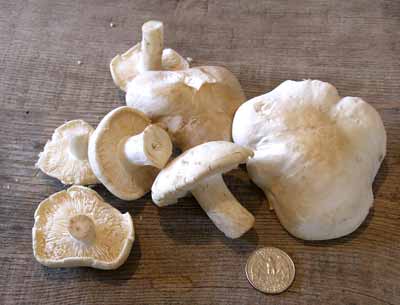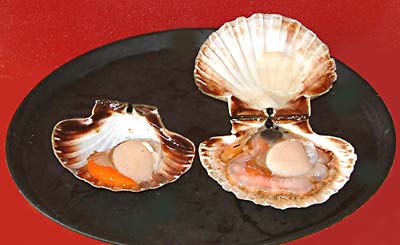
St George's mushroom. A small white or cream mushroom that appears in parts of Europe around St George's Day on 23rd April.
Woodland sorrel. Flowers, leaves and pods can be eaten and have quite a tangy flavour and are sometimes added to salads, or can be chewed as they are said to have thirst-quenching qualities. This has resulted in the leaves being used to make a lemony drink or it may be brewed as a herbal tea, though the flavour is a little dull. Apparently the juice can be used as a substitute for vinegar.

Pilgrim or great scallop. These are shellfish with white meats and pink corals, often cooked in their shells with the corals and have sweet, succulent meat if properly cooked. According to legend, the body of St James (St-Jacques) travelled with a boat with neither oars nor sails around the Iberian coast, coming to rest in Compostela. Many miracles were associated with this journey, including one where the horse of a pagan nobleman leaped into the sea. They emerged carrying the body of St James covered in scallop shells. This resulted in the nobleman converting to Christianity. Pilgrims to Santiago de Compostela have traditionally worn scallop shell badges in commemoration of St James, or used scallop shells as begging bowls. The whole pilgrim route is decorated with his emblem. In some parts of Europe they are eaten on the feast day of St James on 25 July to commemorate the arrival of pilgrims or peregrinos at Santiago de Compostela, often with tomatoes and garlic. They are more often simply and lightly fried.
Sheathed woodtuft. fungus. This is a good edible mushroom but easily confused with other poisonous varieties.
Sheathed woodtuft. fungus. This is a good edible mushroom but easily confused with other poisonous varieties.